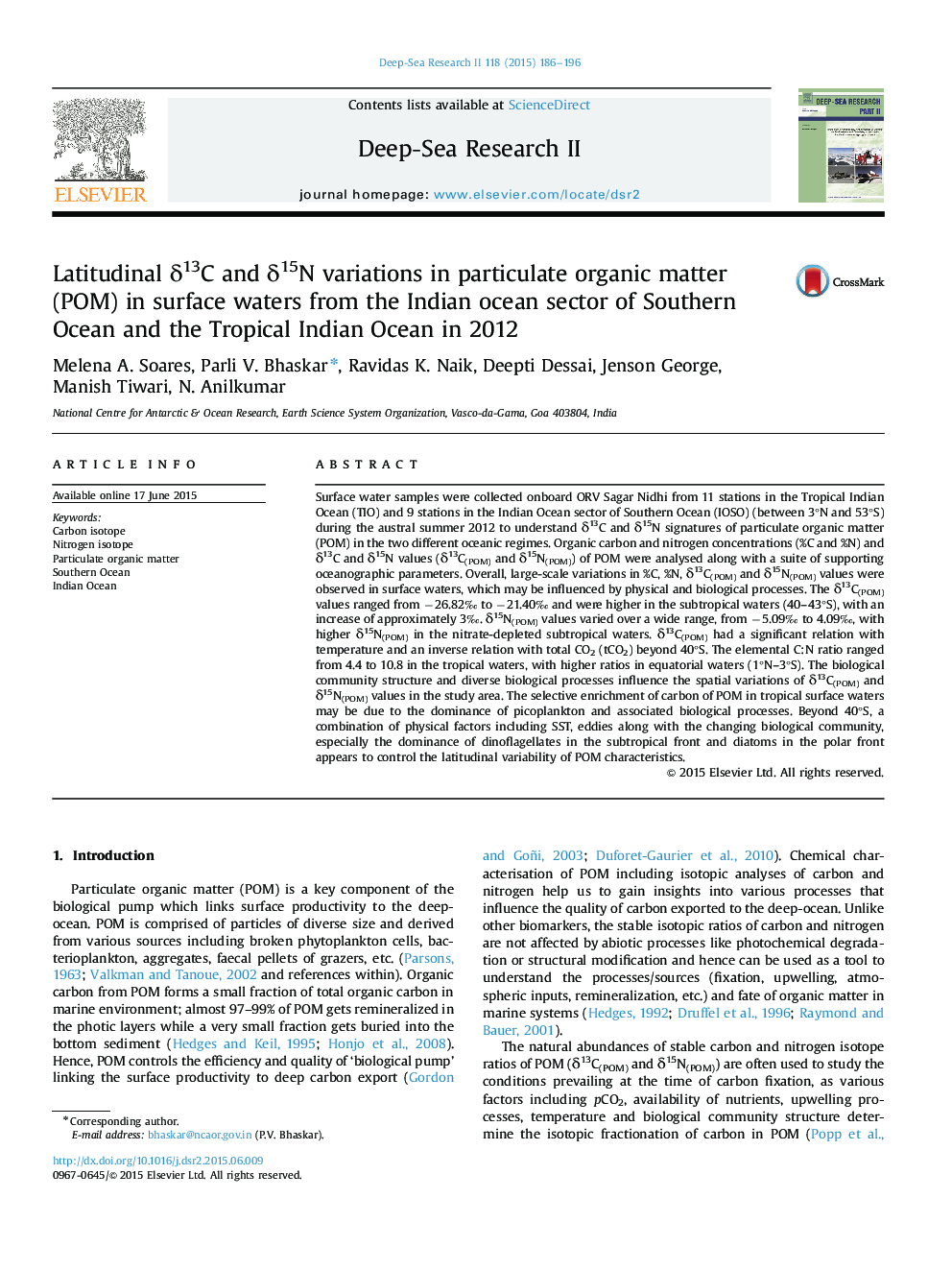| کد مقاله | کد نشریه | سال انتشار | مقاله انگلیسی | نسخه تمام متن |
|---|---|---|---|---|
| 4536197 | 1326294 | 2015 | 11 صفحه PDF | دانلود رایگان |

Surface water samples were collected onboard ORV Sagar Nidhi from 11 stations in the Tropical Indian Ocean (TIO) and 9 stations in the Indian Ocean sector of Southern Ocean (IOSO) (between 3°N and 53°S) during the austral summer 2012 to understand δ13C and δ15N signatures of particulate organic matter (POM) in the two different oceanic regimes. Organic carbon and nitrogen concentrations (%C and %N) and δ13C and δ15N values (δ13C(POM) and δ15N(POM)) of POM were analysed along with a suite of supporting oceanographic parameters. Overall, large-scale variations in %C, %N, δ13C(POM) and δ15N(POM) values were observed in surface waters, which may be influenced by physical and biological processes. The δ13C(POM) values ranged from −26.82‰ to −21.40‰ and were higher in the subtropical waters (40–43°S), with an increase of approximately 3‰. δ15N(POM) values varied over a wide range, from −5.09‰ to 4.09‰, with higher δ15N(POM) in the nitrate-depleted subtropical waters. δ13C(POM) had a significant relation with temperature and an inverse relation with total CO2 (tCO2) beyond 40°S. The elemental C:N ratio ranged from 4.4 to 10.8 in the tropical waters, with higher ratios in equatorial waters (1°N–3°S). The biological community structure and diverse biological processes influence the spatial variations of δ13C(POM) and δ15N(POM) values in the study area. The selective enrichment of carbon of POM in tropical surface waters may be due to the dominance of picoplankton and associated biological processes. Beyond 40°S, a combination of physical factors including SST, eddies along with the changing biological community, especially the dominance of dinoflagellates in the subtropical front and diatoms in the polar front appears to control the latitudinal variability of POM characteristics.
Journal: Deep Sea Research Part II: Topical Studies in Oceanography - Volume 118, Part B, August 2015, Pages 186–196